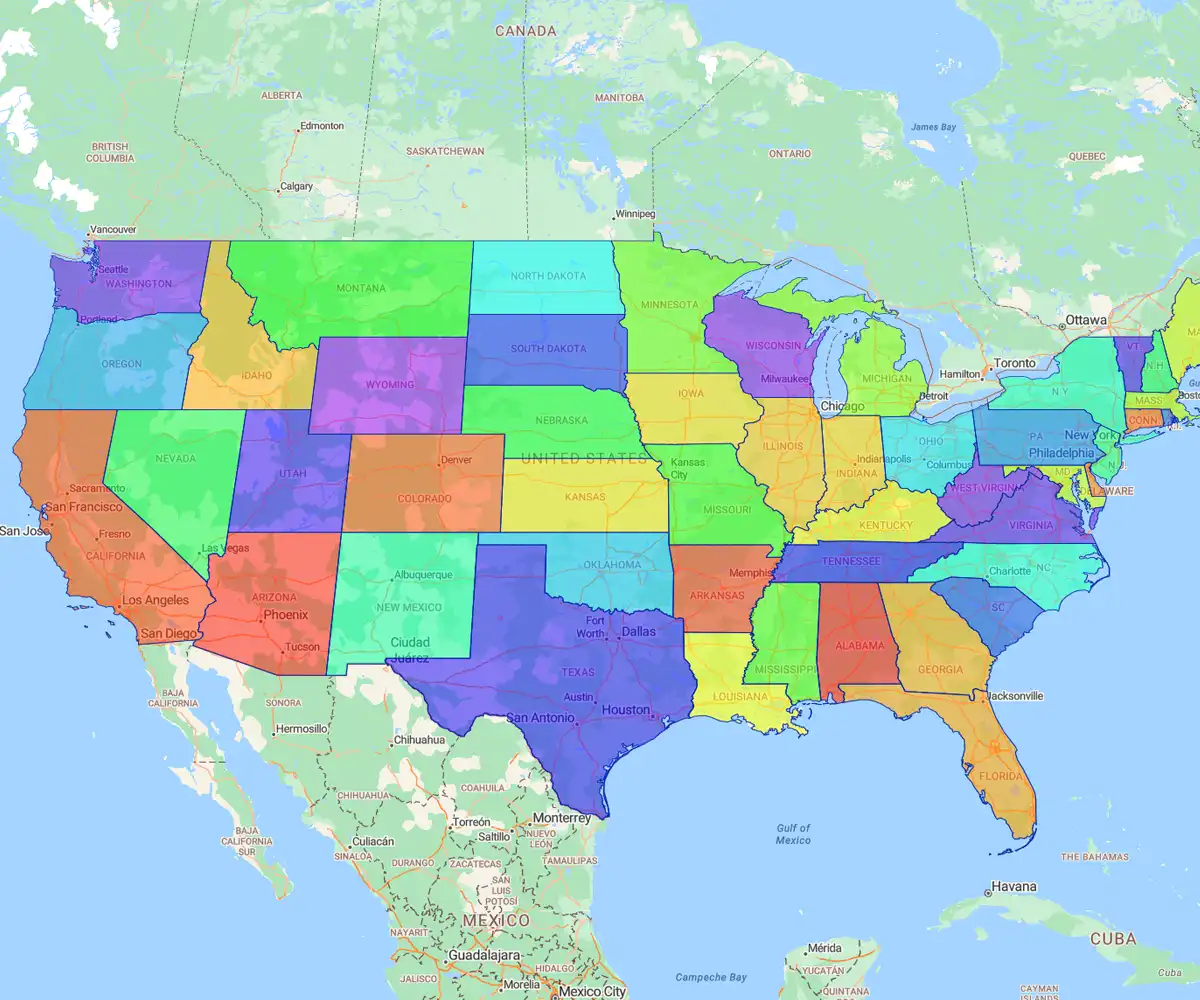Quick answer
Accelerating sales pipeline growth is a challenge for reps, managers, and sales ops alike, especially with rising pressure to perform in any market. Mapping software for sales adds a powerful layer of insight, helping teams analyze sales data and uncover new strategic opportunities.
Below are key ways maps can drive smarter sales planning and territory decisions:
- Visualize and optimize territories: Structure geography-based, account-based, or hybrid territories to eliminate gaps and boost efficiency
- Build efficient rep routes: Use route optimization to maximize face-to-face selling time and reduce travel costs
- Allocate resources strategically: Map competition, identify growth hotspots, and find optimal locations for new hires
- Speed up pipeline movement: Visualize deals by location, track win/loss patterns, and sync with CRM for real-time insights
- Implement with proven steps: Import CRM data, design territories, build routes, track performance, and refine over time
What is Sales Mapping Software?
Sales mapping software is a visual tool that transforms raw geographic data, such as customers, leads, accounts, and territories, into interactive maps. Businesses can import data from their CRM or spreadsheets and instantly overlay it onto pin, heat, or territory maps.
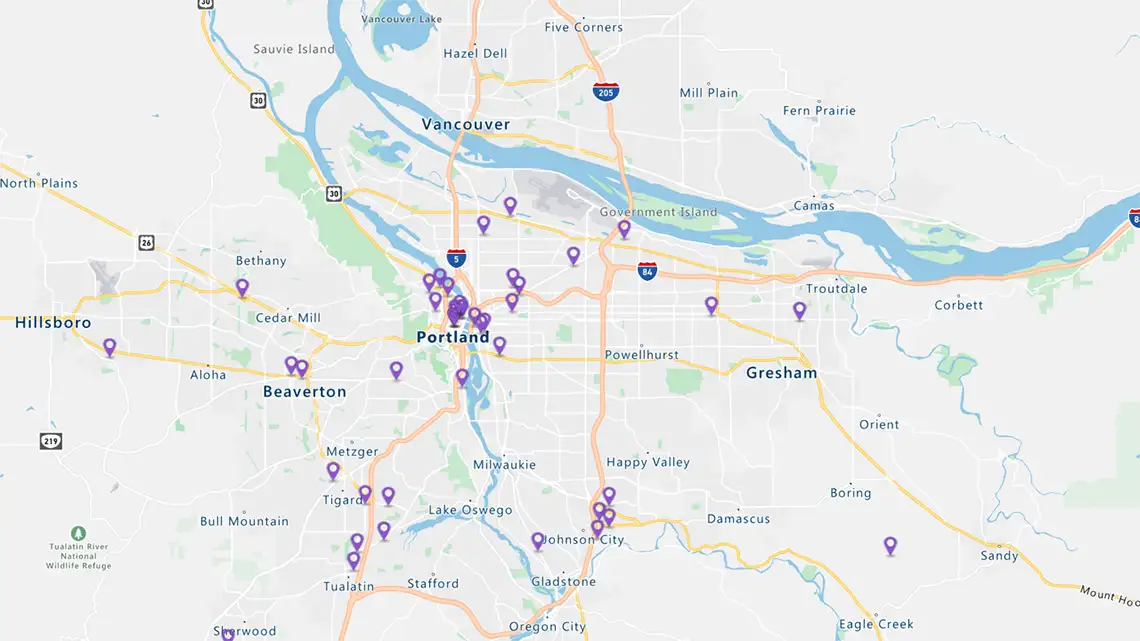
Key Benefits for Pipeline Growth
Accelerate pipeline growth with software that shows sales teams where to focus for maximum impact. It makes it easy to visualize lead distribution, reduce travel time, and optimize territories. With clearer insights, teams prioritize high-potential areas and close deals faster.
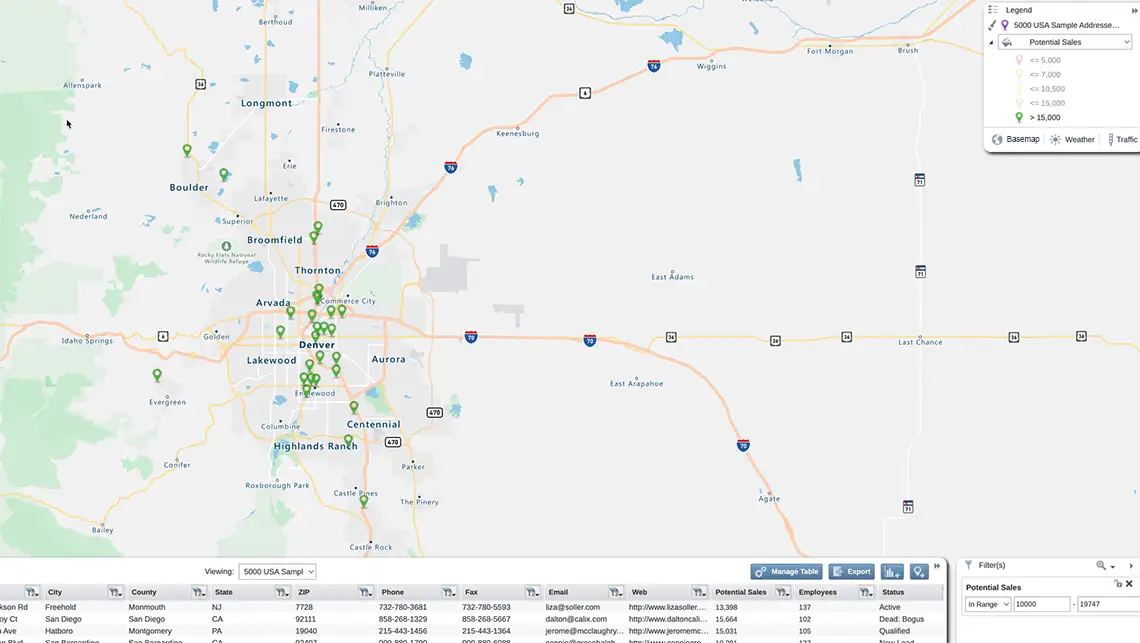
Ideal clients in Denver
Filter data to show ideal client locations
Visualize Sales Territories
Mapping your sales territories is more than drawing lines on a map; it's a strategy that enables you to accelerate sales. Sales territory management software helps you see your sales footprint clearly. There are three common ways to structure your sales territories:
- Geography based: Assign all accounts within a geographic boundary (e.g., by ZIP code) to specific reps.
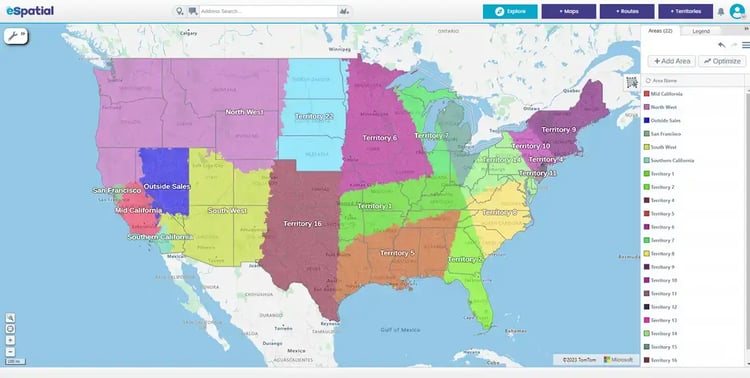
- Account-based: Assign reps to manage high-value accounts regardless of location.

- Hybrid: Combine geography and account-based models to balance coverage, specialization, and flexibility.

Pipeline mapping software brings these structures to life. Visualize where your customers are, along with your current and potential revenue, to:
- Spot overlaps, gaps, and saturation fast
- Find high-potential areas for growth
- Test territory changes to boost efficiency
- Align teams around data-driven opportunities
Optimize rep routes
Route optimization software means more calls are completed in less time. The mapping software for sales reps uses sophisticated algorithms to take your customer data and locations while plotting your optimal day and week. Your reps can adjust their schedules on the fly, and any changes are sent back to sales operations.
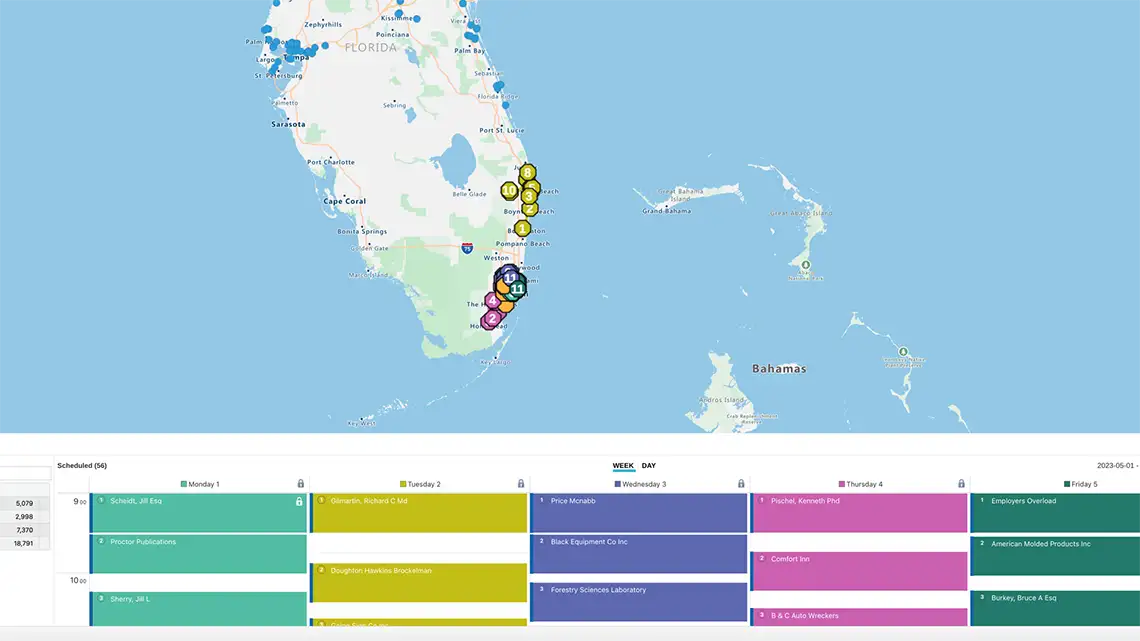
Allocate resources smarter
eSpatial's business mapping solutions software becomes a practical program to accelerate sales by helping you allocate resources more strategically, allowing you to:
1. Map your competition:
Layer competitor locations onto geographic sales maps, enabling faster, more strategic planning. This helps with:
- Visualizing competitive presence
- Planning smarter sales routes
- Territory defense & expansion
2. Map your highest-growth hotspots
Use Heatmaps to analyze your sales coverage hotspots. Analyze your sales by product regularly. Are there growth trends in certain products that appear to be potential "hotspots?"
For instance, a low-volume product may grow by more than 100% monthly. Will it be your future best seller? Use your analysis to ensure you effectively resource your highest-growth sales areas.
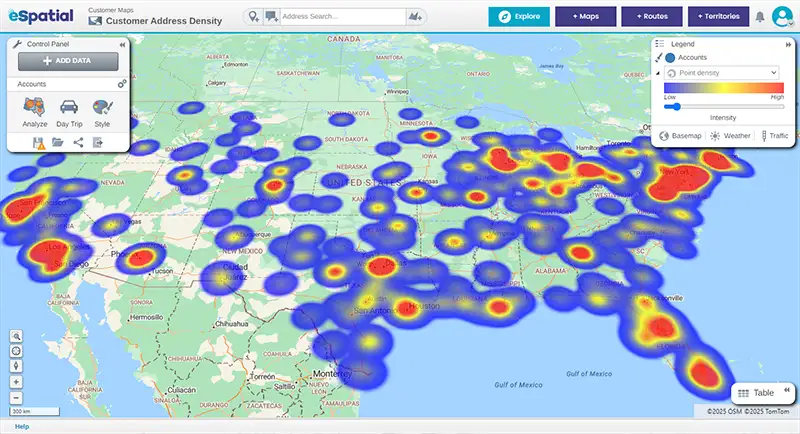
3. Map the optimal location for a new salesperson
Your ideal location for a representative is a weighted center. A weighted center considers your customer locations, and your reps' perfect location is close to customers. When expanding your team, select your ideal location first and, where possible, hire someone near that spot.
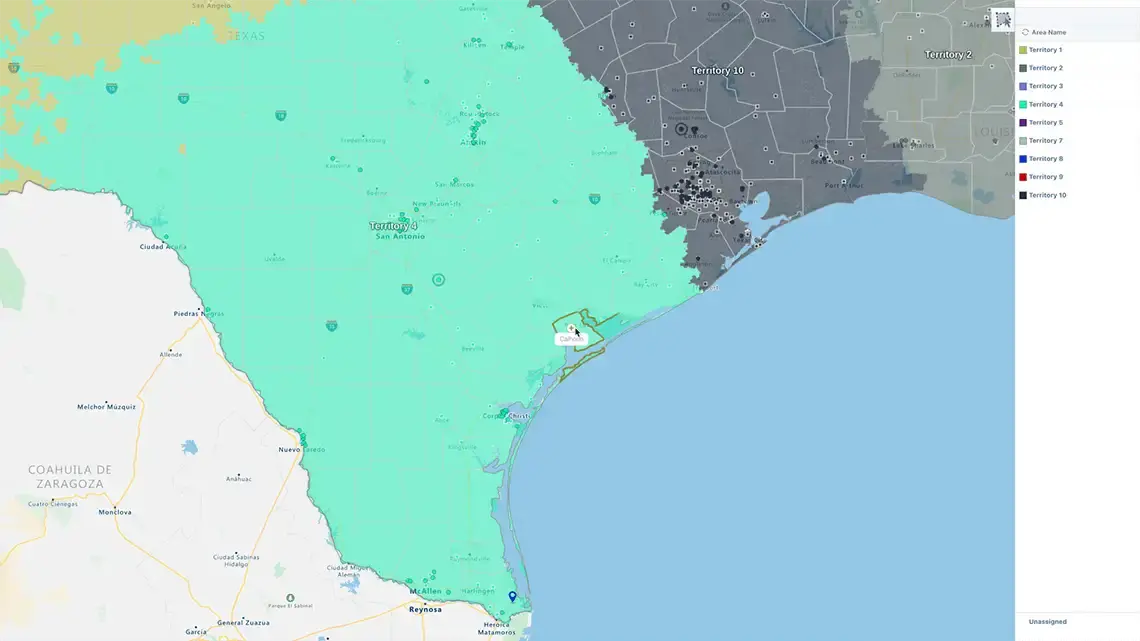
Ideal location
Actual location
Speed up pipeline movement
- Map your ideal clients to know who your customer should be and how to acquire more ideal clients.
- Map your data in your sales pipeline optimization software to visualize the sales pipeline in relation to customer and prospect locations.
- Map your win/loss pipeline reviews to uncover why deals succeed or fail and build team cohesion.
Sync with your CRM
Map your metrics for sales meetings
- Display your sales performance by territory
- Plot your competitor locations and plan a new campaign
- Show your pipeline forecasts by area
- Highlight your product performance by sales rep
- Map your new leads and opportunities
Map your sales productivity or utilization numbers
Want to boost sales productivity? Start by reducing admin. Spot unbalanced workloads, compare call frequencies and close rates, and take action to improve performance fast.
A good formula for this is:
Average call or meeting duration + Average travel time * Call frequency
Use your territory mapping software to compare call frequencies and close rates. See the regional performance firsthand, and take some actions to improve or rebalance results.
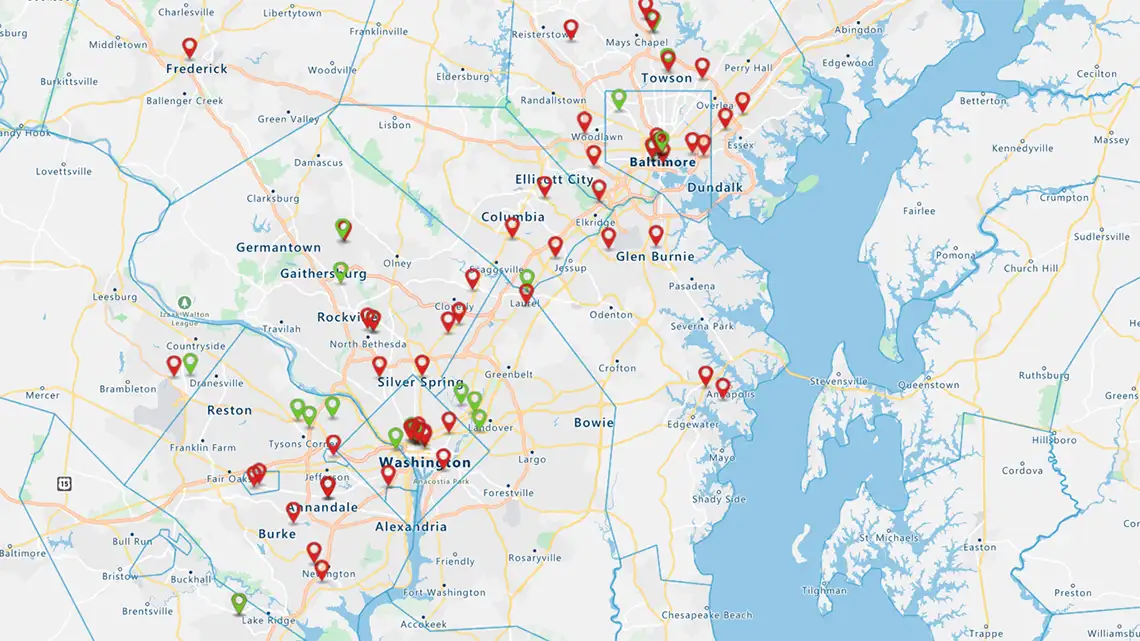
How to Implement Mapping Software
Implementing mapping software is simple and repeatable. Import your CRM data, design a sales process, balance territories, and build optimized rep routes. Track results and refine your maps to stay aligned with evolving market conditions.
Step 1
Import CRM Data
eSpatial allows you to upload data directly from spreadsheets (Excel/CSV) or connect live to CRMs like Salesforce. Once connected, eSpatial automaps standard CRM fields. You can also auto-map custom fields to ensure all relevant data is visualized.
Step 2
Design Territories
Designing sales territories often starts with grouping accounts by location. eSpatial makes it easy with radius buffers based on distance or drive time. With detailed boundary options, users can easily create and refine territories down to the local level.
Step 3
Build Rep Routes
The route optimization tool builds the most efficient daily or weekly schedules for your reps. Just select the accounts or leads to visit, and it calculates the shortest route using live map data. This lets reps spend more time selling.
Step 4
Track Performance
With territories and routes mapped, visualize key sales metrics by rep, product, or pipeline stage. Spot what's working and where gaps exist. Real-time insights help you keep your pipeline growing.
Step 5
Refine Over Time
Sales territories and markets change, so your maps should too. Regularly reviewing performance and workloads is a must. Adjust territories and routes to keep your sales efforts efficient and aligned with growth goals.
Best Mapping Tools for Sales Teams
The right mapping tool can transform how your sales team plans, analyses, and grows. Here's a quick look at the top options.
1. eSpatial
eSpatial offers a powerful combination of territory management, route optimization, and data visualization, all within an intuitive interface. It supports advanced features like clustering, heat maps, and real-time collaboration. For sales teams seeking a comprehensive, scalable solution with real ROI, eSpatial leads the pack.
2. Salesforce Maps
Salesforce Maps provides robust route planning and CRM integration. It allows users to visualize leads, accounts, and opportunities directly within Salesforce. On the downside, some find it less intuitive and customizable than standalone tools.
3. Badger Maps
Badger Maps is praised for its mobile-first design and route optimization. It enables field reps to plan and navigate efficient daily routes. However, it offers fewer data visualization and analytical functions.
4. Maptive
Maptive builds on Google Maps to deliver powerful but easy-to-use tools. It's recognized for its strong filtering and visual analysis. Users can upload and analyze large datasets with comprehensive map styling.
5. Pipedrive Add-ons
Pipedrive add-ons provide lightweight, easy-to-use mapping tools. They're ideal for teams that need basic location insights. Various plugins integrate geolocation data directly into the CRM platform.
Final Thoughts and Takeaways
Mapping software helps sales teams design better territories, plan efficient routes, and track real performance. It keeps your pipeline moving and your reps focused. If you need a program to accelerate sales, take a look at the eSpatial pricing plans and let's get started.


